Online ordering has led to a surge in new warehouses — their trucks are choking neighborhoods with pollution
Kim Wasserman’s son had his first asthma attack at just three months old.
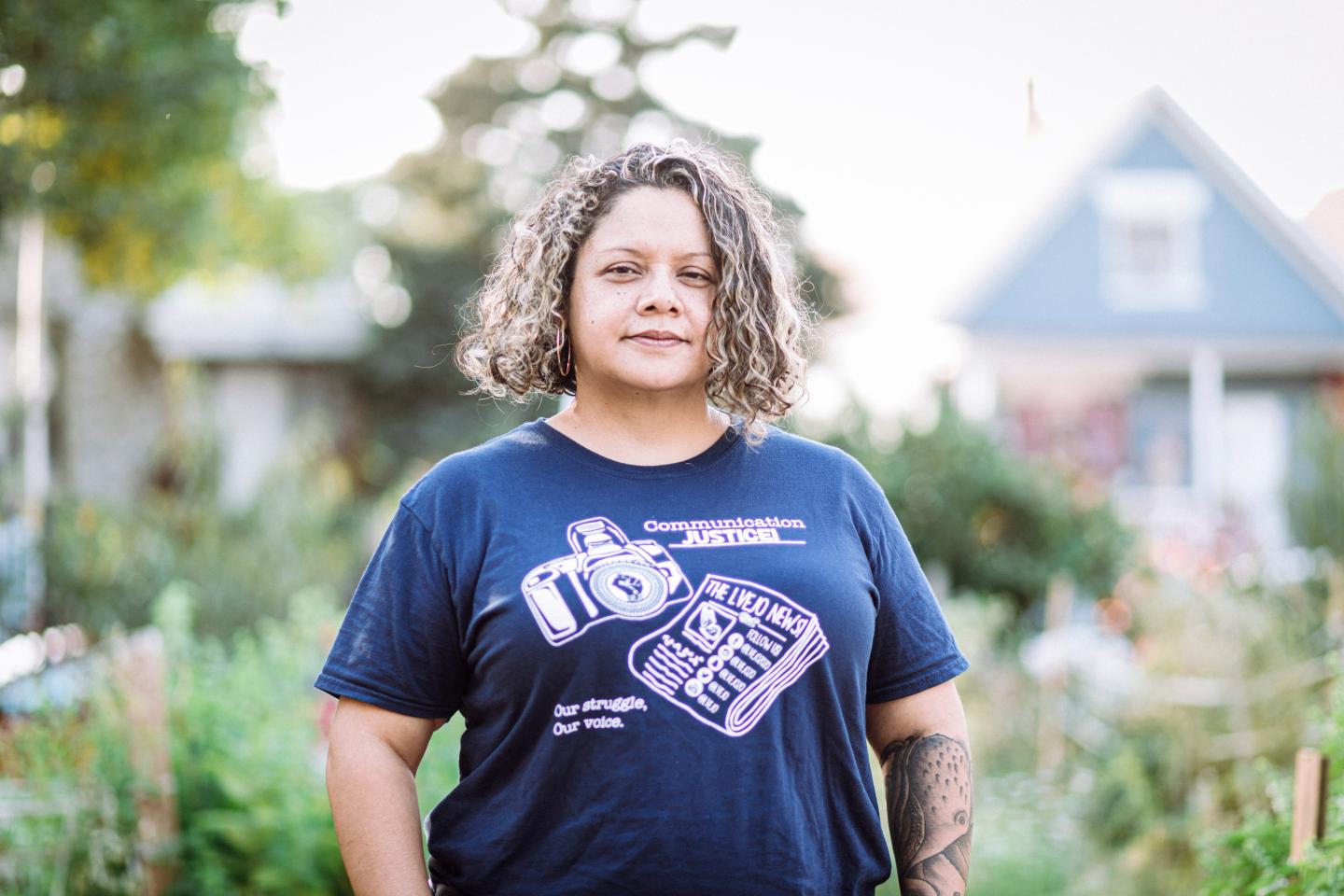
Seeing such a young baby gasping for air prompted the doctor to ask Wasserman about her son’s living environment. “He asked if we smoked in the house or if we might have mold,” she recalls. After ruling those things out, the doctor asked her where she lived.
“That doctor opened my eyes to understanding that living near industry was the reason that my son couldn’t breathe,” says Wasserman, who lives in the Little Village neighborhood on the southwest side of Chicago.
Air pollution was a danger to her baby that Wasserman had never thought about. But research shows pollution not only exacerbates asthma, it’s also a risk factor for developing it in the first place.
“It pissed me off,” she says. “So, I turned that anger into action.”
Battling to breathe
Today, 25 years later, Wasserman is the long-time executive director of the Little Village Environmental Justice Organization (LVEJO).
Little Village, or La Villita as locals call it, is a tight-knit Chicago community that’s been home to mostly Mexican families for decades.
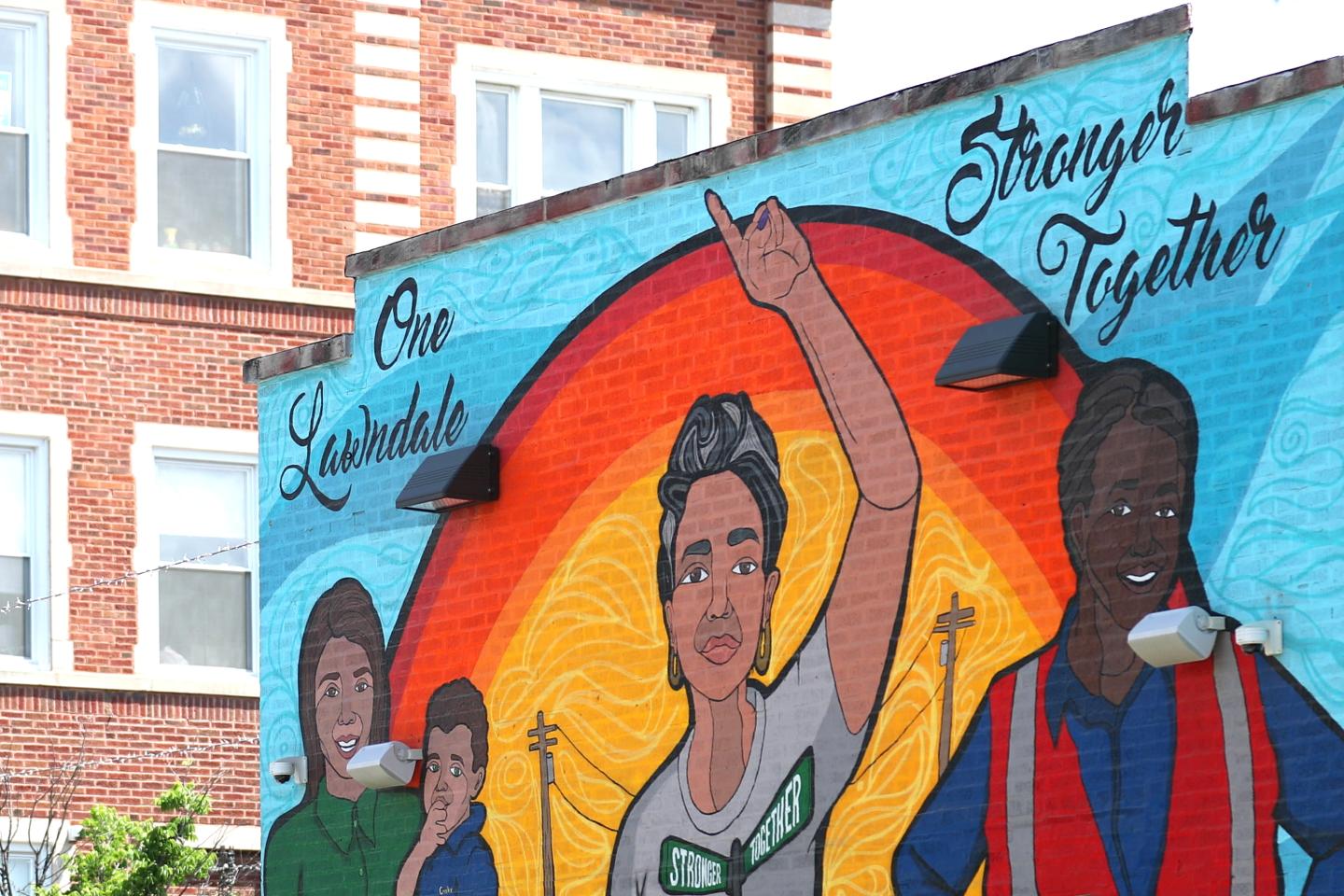

Murals adorn Little Village, a densely populated area in southwest Chicago. There are about 27,000 people per square mile in South Lawndale, where Little Village is situated. (Mohammad Shahhosseini/EDF)
Its main commercial area — 26th Street — is a lively mix of locally owned shops, taquerias, bakeries and other vendors. There are colorful murals, historic architecture and neighborhood streets lined with family homes.
But idling in front of many of those homes are noisy, polluting trucks.
That’s because Little Village sits in an industrial corridor that’s home to a growing number of warehouses, attracted by the area’s proximity to a shipping canal, a rail hub and highways.
Despite community resistance, the warehouses keep coming, clogging neighborhood streets with truck traffic.
In a particularly upsetting turn of events for Wasserman, a new one-million-square-foot warehouse recently opened in the same spot where a dirty coal-fired power plant — a plant that she and others fought for 12 years to shut down because of its pollution — once stood.
“We traded coal for diesel,” Wasserman says, her voice breaking with emotion.
For decades, LVEJO has been trying to reduce the number of polluting industries in Little Village, so to see one go — only to be replaced by another — added insult to injury.
Ana Solano, a 26-year resident of Little Village, shares Wasserman's frustration. “Whenever a new warehouse comes into the neighborhood, we hear the same promise: This will bring jobs to the community,” she says.
But city data reveals that even though the number of jobs in Little Village has increased, employment rates for residents have stayed relatively flat.
“We’re getting the pollution, but the economic benefit very rarely comes through,” Wasserman says.
More trucks: Coming soon to a neighborhood near you?
Chicago leads the country in warehouse-related truck traffic, but the Environmental Defense Fund (EDF) also found that communities in and around Los Angeles and Dallas-Fort Worth are seeing high truck traffic from warehouses too.
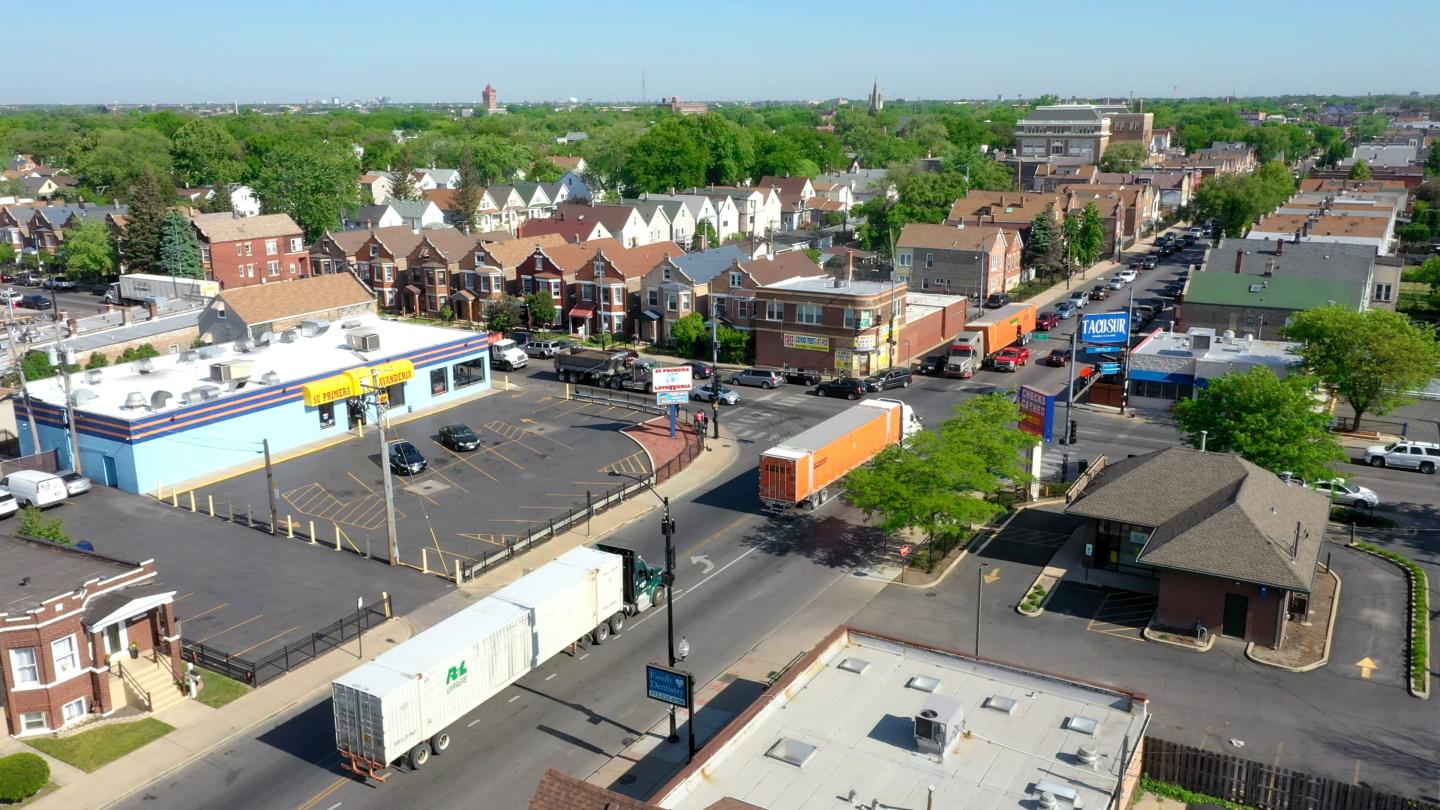
“Corporations have taught consumers to expect just-in-time products, and easy returns,” says Aileen Nowlan, policy director for EDF’s Global Clean Air initiative. “As a result, warehouses have moved closer to people’s homes in more communities than ever before, and they’re bringing harmful air pollution from trucks with them.”
Ana Solano long-time residentPeople think the danger in Little Village is gang violence. But the real danger here is the pollution.
Data shows that areas with a lot of truck traffic also suffer from health problems that are made worse by exposure to diesel exhaust. Even though freight trucks and buses only make up about 10% of the vehicles on U.S. roads, they are responsible for nearly half of the transportation sector’s health-damaging nitrogen oxide emissions, which are linked to asthma, heart disease and cancer.
In Chicago, pollution is already disproportionately harming Black and Latino communities. A recent investigation by the U.S. Department of Housing and Urban Development determined that Chicago leaders “discriminated on the basis of race and national origin” when they chose to put polluting industries in these communities.
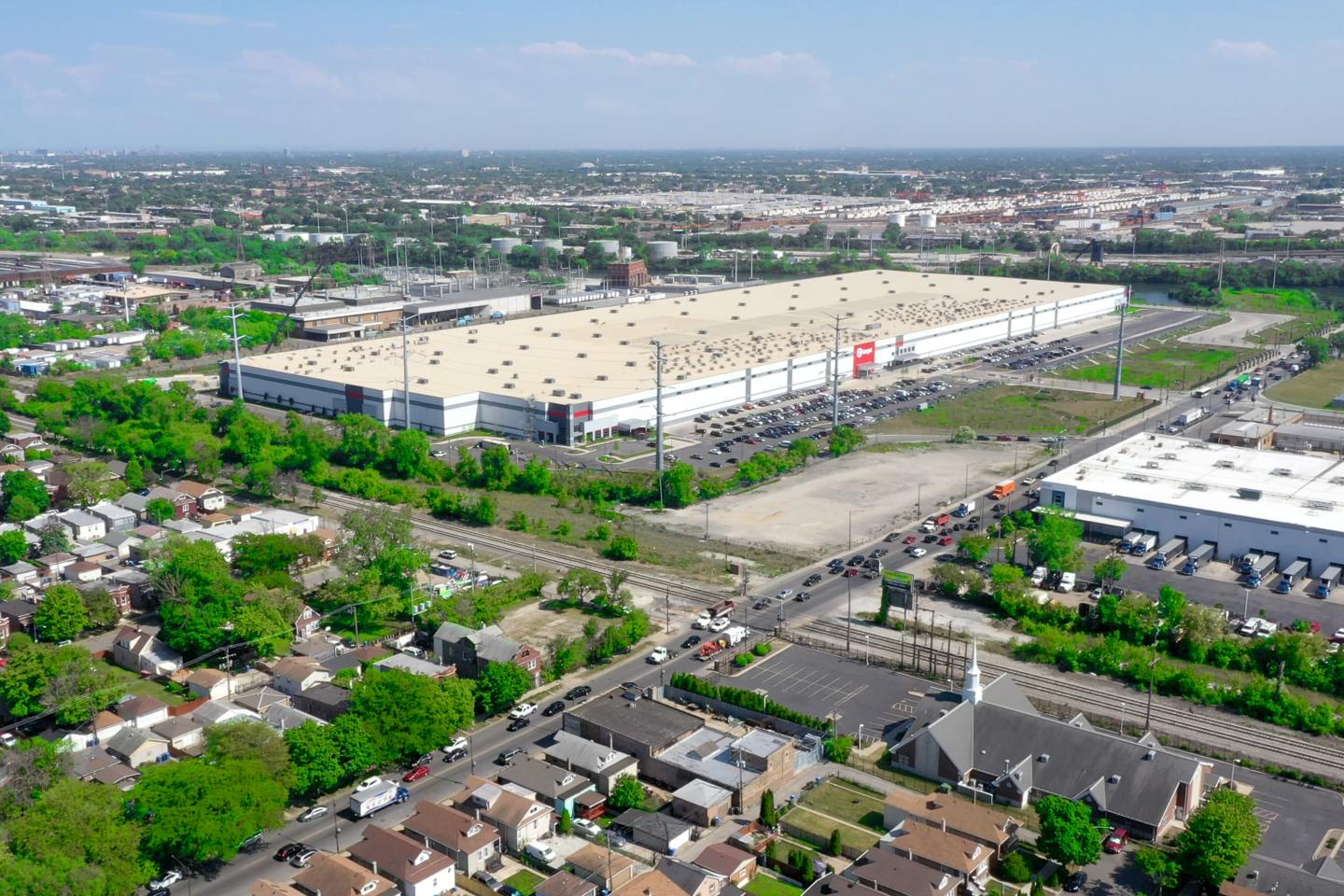
And new EDF data shows that the concentration of Black and Latino residents around warehouses in Illinois is nearly double what would be expected given the population.
This is consistent with the experience of Little Village residents, many of whom grow up with asthma or have watched older loved ones suffer from issues like heart disease.
“People think the danger in Little Village is gang violence,” Solano says. “But the real danger here is the pollution.”
What’s the solution?
“Greater transparency around warehouse locations and the pollution they attract is critical,” Nowlan says, adding that if warehouse owners were legally required to disclose the projected truck traffic along with the emissions expected each time a new facility was proposed — community pressure would force better monitoring of warehouse pollution.
“We also need more clean trucks in the places where people live,” she says.
“Many warehouses attract thousands of truck trips a day,” Nowlan says. (In Little Village, LVEJO volunteers once calculated that 1.3 trucks rumble past their local elementary school every minute.)
Swapping out even some of those trucks for zero-emission ones, which are already available and increasingly affordable, would make a dent in pollution near warehouse facilities.
Laws limiting pollution from trucks would help too.
At the federal level, Biden’s EPA recently proposed two rules that would set new limits on tailpipe pollution. If adopted, the EPA estimates that up to half of certain types of new medium- and heavy-duty vehicles — including urban delivery trucks — would be zero-emitting.
And there’s another legal roadmap to follow at the state level: California’s Advanced Clean Trucks Rule.
Put simply, the Advanced Clean Trucks Rule requires manufacturers of commercial vehicles like freight trucks and delivery vans to sell an increasing number of new zero-emission vehicles every year.
It’s already been adopted by six additional states, but not Illinois.
Organizers from LVEJO, Warehouse Workers for Justice, the Respiratory Health Association and others are working to change that.
“We hope that clean trucks legislation will be introduced here in January,” says EDF senior attorney Larissa Koehler. “Illinois already has CEJA (the Climate and Equitable and Jobs Act) which will put one million EVs on the road by 2030. But there’s nothing specific to medium- and heavy-duty trucks, which are the ones that go in and out of Little Village — many driving down residential streets even when they aren’t supposed to.”
But just swapping out polluting trucks for zero-emission ones isn’t enough, says Wasserman. She wants fewer trucks in her community overall, and for residents to have more of a say in the way that land in Little Village is used.
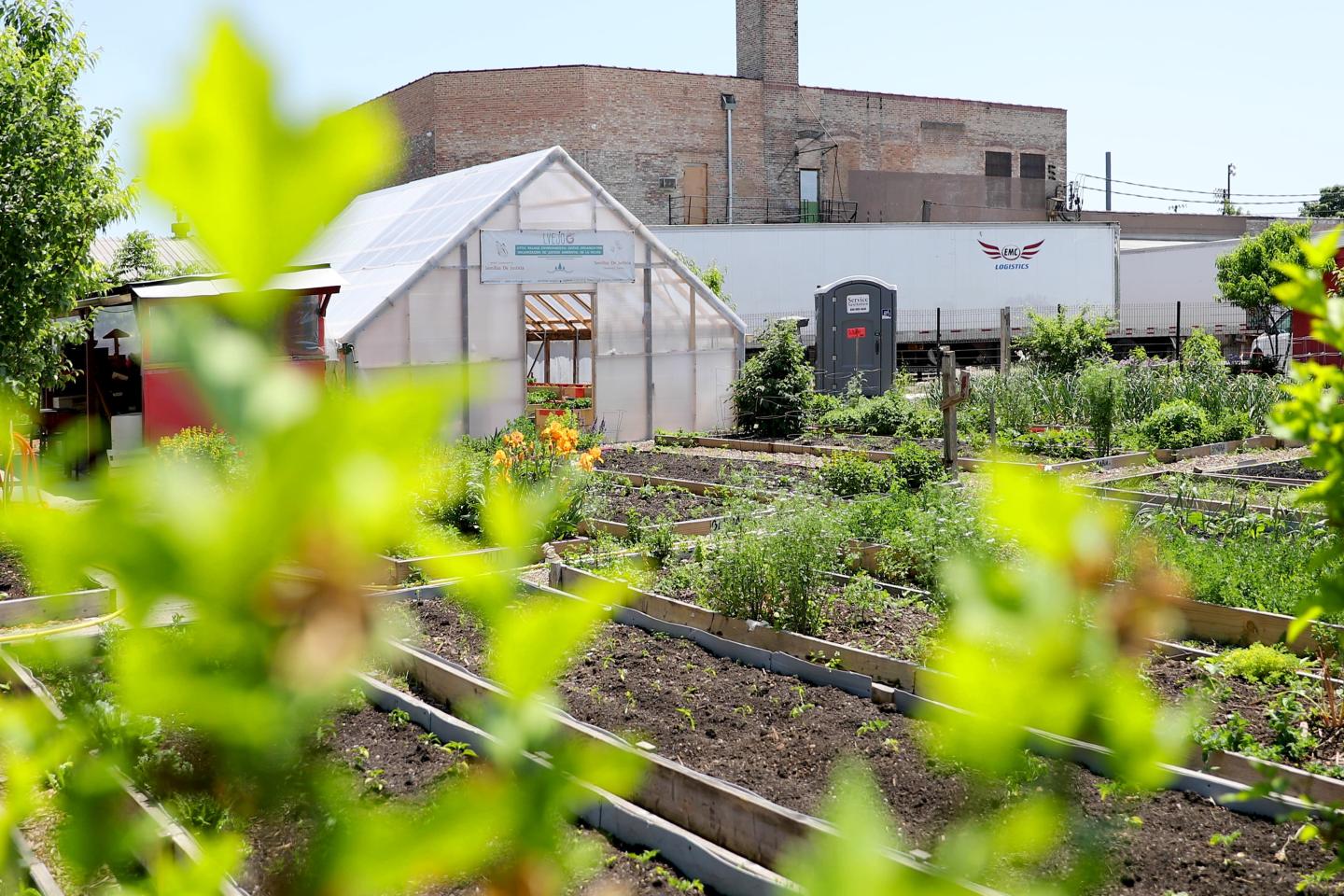
“Our folks have been asking for access to land. They want to be able to grow their own food,” she says. “There’s no reason that diesel trucks should be coming in to provide fruits and vegetables that we can grow here. We could put our land to better use than warehousing.”
Resident Esmeralda Hernandez says she’s tired of feeling like Little Village is a dumping ground for business. “There’s always an issue with bringing in more schools or more green space here,” she says. “But there seems to be land for these corporations.”
So activists like Wasserman continue to push for change.
“I was born and raised in Little Village,” says Wasserman, who also raised her own family in the community. “We have the right to breathe clean air,” she says. “And I’m not going to stop fighting for my family’s right to breathe.”


